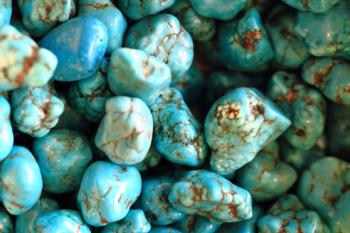
Using LIBS for Archaeological Analysis at Saqqara
A recent study used laser-induced breakdown spectroscopy (LIBS) to analyze artifacts from King Djoser’s Step Pyramid at Saqqara.
By using laser-induced breakdown spectroscopy (LIBS), archaeologists were able to learn more about ancient artifacts at Saqqara, according to a study published in the Journal of Cultural Heritage (1).
Saqqara is a well-known ancient Egyptian archaeological site that serves as the burial grounds of Egyptian royalty. It is most well-known for the Step Pyramid, which is the resting place of King Djoser, an Egyptian pharaoh in the Old Kingdom who reigned during the Third Dynasty (2). Near King Djoser’s Step Pyramid is a series of tombs that house other members of Egyptian royalty, and many of these have been excavated.
A recent study conducted at Cairo University examined ancient artifacts uncovered from the Ptahemwia tomb, which is right by Djoser’s pyramid, using LIBS for the analysis. LIBS, a technique that requires no sample preparation, has been increasingly favored in archaeological investigations for its cost-effectiveness and ability to perform stratigraphic measurements (1). These attributes make it especially useful for in situ analyses at museums and excavation sites, where preserving the integrity of cultural heritage artifacts is important (1).
Led by Mohamed Abdel-Harith, the research team employed LIBS to analyze black resin remains and gold fragments used in the mummification process. These samples were retrieved from the Ptahemwia tomb, which date back to the 19th Dynasty. The 19th Dynasty was one of the most prosperous dynasties in ancient Egypt, mostly because of Ramesses II’s long and successful reign.
The researchers utilized two laser wavelengths for the LIBS measurements: near-infrared (1064 nm) and ultraviolet (355 nm). The results revealed a notable dependence of the emission line intensity on the laser wavelength used (1). For the black resin samples, elements such as sodium (Na), calcium (Ca), molybdenum (Mo), and the molecular band of cyanogen (CN) were detected. In contrast, the gold fragments showed significant traces of gold (Au), silver (Ag), and copper (Cu) (1).
One of the study's critical findings was the higher detection sensitivity achieved with the ultraviolet (UV) laser. This sensitivity is crucial for identifying rare earth elements (REE) such as yttrium (Y) and lanthanum (La), as well as minor elements like niobium (Nb) and zirconium (Zr), which are often present in minimal quantities in archaeological samples (1).
To validate the LIBS results, the team also employed energy-dispersive X-ray (EDX) analysis. The EDX results corroborated the findings from the LIBS technique, particularly confirming that the black resin was composed of bitumen (1). This consistency with existing literature underscores the reliability of LIBS as an analytical tool in archaeology (1).
LIBS was used for this analysis because of its rapid analysis time. Because archaeologists need accurate data to inform them on next steps when excavating, LIBS is the ideal technique for archaeological analysis.
The successful application of LIBS in this study not only highlights its potential in uncovering the elemental composition of archaeological samples but also demonstrates its practical advantages for fieldwork. By providing a quick, reliable, and nondestructive means of analysis, the strengths of LIBS make it a suitable technique to be used in the preservation and study of cultural heritage (1).
The study’s findings are particularly relevant for ongoing archaeological efforts in Egypt and other regions rich in historical artifacts. As researchers continue to explore ancient sites, the ability to perform detailed, in situ analyses without compromising the integrity of the artifacts is of utmost importance.
References
(1) El-Saeid, R. H.; Abdelhamid, M.; Ali, M. F.; Abdel-Harith, M. LIBS Utilization for the Elemental Analysis of Black Resin and Gold Used by Ancient Egyptians in Embalming. J. Cult. Herit. 2024, 67, 101–110. DOI:
(2) Clayton, P. Chronicle of the Pharaohs. Thames Hudson, London, 1994.
Newsletter
Get essential updates on the latest spectroscopy technologies, regulatory standards, and best practices—subscribe today to Spectroscopy.





